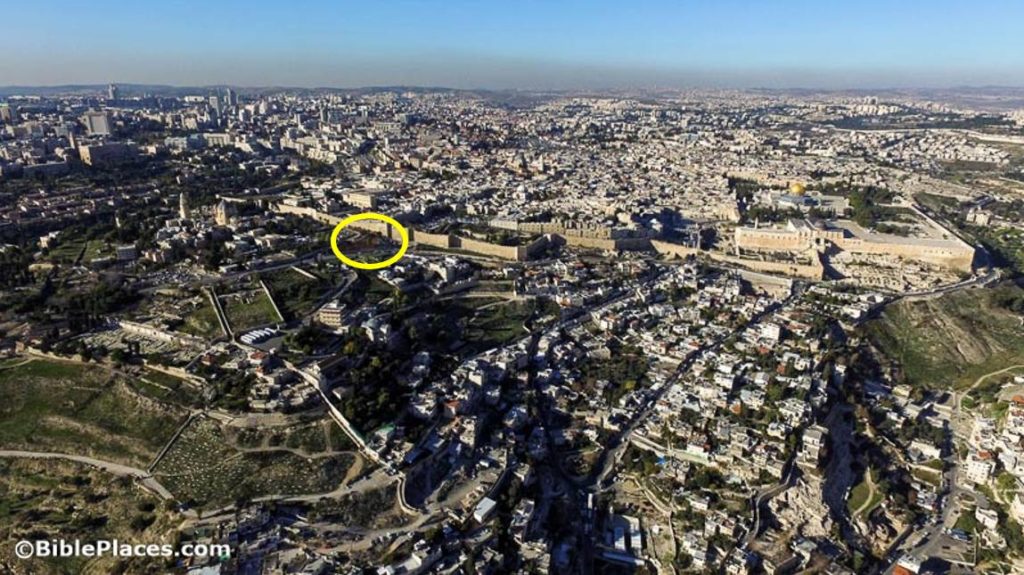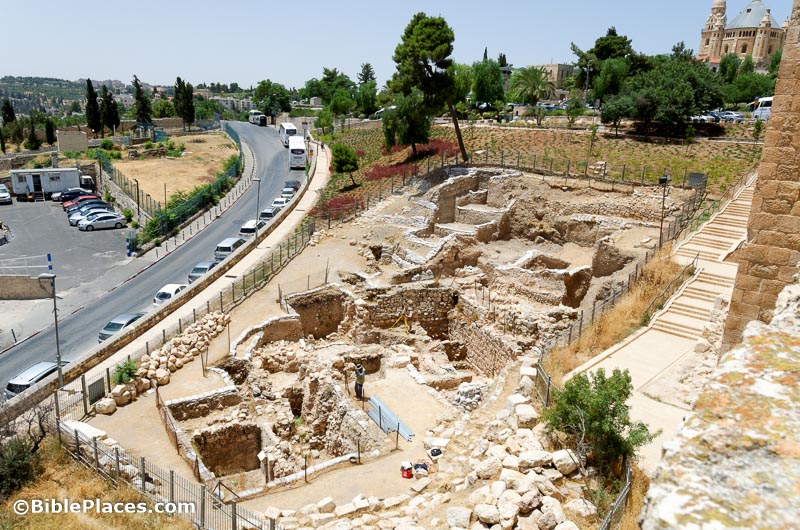A few weeks ago I mentioned that the new Ancient Jerusalem Revealed: Archaeological Discoveries, 1998-2018 has been published, but I lamented the difficulty for many readers in ordering it from Israel. Now I have received word that you can order it direct from the Biblical Archaeology Society. (Two other options: Amazon or the Israel Exploration Society)
I have not yet read the book (my order is going in after I write this), but my expectations are very high given (1) the excellent quality of the two previous books in this series (the first published in 1975, and the second published in 1994); (2) the editorship of Hillel Geva; and (3) the fact that the latest reports from Jerusalem archaeology are bound to be amazing! I’ve told a number of groups touring Jerusalem, as we’re trying to peek behind some protective curtain to see what’s going on – watch for this to be published. Well, here it is, in a single book covering the last 20 years. The price is $60 for a hardcover, and shipping is free.
Here is the official description from the publisher:
Ancient Jerusalem Revealed, Archaeological Discoveries 1998–2018, presents the results of archaeological research conducted in Jerusalem over the past twenty years. xvi + 319 pages + profusely illustrated in color, 27.5 x 21 cm., hardcover.

The major results of the numerous excavations presented in the current volume cover all parts of the ancient city: the City of David, the Ophel, the Temple Mount, the present-day Old City, and adjacent areas beyond the urban limits of ancient Jerusalem. The articles were written by archaeologists who conducted the excavations. Contents include: The Bronze Age to the Iron Age, The Second Temple Period, the Late Roman to Ottoman periods, and multi-period excavations.
And here’s the table of contents, with an * next to the articles I plan to read first.
TABLE OF CONTENTS
Archaeological Research in Jerusalem from 1998 to 2018: Findings and Evaluations— Hillel Geva
JERUSALEM—THE BRONZE AGE TO THE IRON AGE
*Recent Discoveries in the City of David—Ronny Reich, Eli Shukron, and Omri Lernau
Excavations at the Summit of the City of David Hill, 2005–2008—Eilat Mazar
*The Royal Quarter Built by King Solomon in the Ophel of Jerusalem in Light of Recent Excavations (2009–2013)—Eilat Mazar
A “Governor of the City” Seal Impression from the Western Wall Plaza Excavations in Jerusalem—Tallay Ornan, Shlomit Weksler-Bdolah, and Benjamin Sass
JERUSALEM—THE SECOND TEMPLE PERIOD
*The Second Temple Period Siloam Pool—Ronny Reich and Eli Shukron
*Second Temple Period Finds from the New Excavations in the Ophel, South of the Temple Mount—Yuval Baruch and Ronny Reich
Research in the Western Wall Tunnel—Dan Bahat
Wilson’s Arch and the Giant Viaduct West of the Temple Mount during the Second Temple and Late Roman Periods in Light of Recent Excavation—Alexander Onn and Shlomit Weksler-Bdolah
*A Herodian Tricilinium with Fountain on the Road Ascending to the Temple Mount from the West—Alexander Onn, Shlomit Weksler-Bdolah, and Joseph Patrich
*First and Second Temple Period Fortifications and Herod’s Palace in the Jerusalem Kishle Compound—Amit Re’em
Discoveries from the First and Second Temple Periods near the Mamilla Pool in Jerusalem—David Amit
JERUSALEM—THE LATE ROMAN TO OTTOMAN PERIODS
*A First Temple Period Building and the Roman Eastern Cardo in the Western Wall Plaza—Shlomit Weksler-Bdolah and Alexander Onn
A Pool from the Period of Aelia Capitolina in the Jewish Quarter of Jerusalem—Ofer Sion and Yehudah Rapuano
Wilson’s Arch: 150 Years of Archaeological and Historical Exploration—Tehillah Lieberman, Avi Solomon, and Joe Uziel
The Legio X Fretensis Kilnworks at the Jerusalem International Convention Center—Haim Goldfus and Benny Arubas
Roman Period Workshops at the Crowne Plaza Hotel at Givat Ram—Ron Beeri and Danit Levi
Excavations at Saint John Prodromos Church in the Old City—Jean-Baptiste Humbert
A Gold Hoard Containing Jewish Symbols and the Byzantine Ophel Neighborhood of Jerusalem—Eilat Mazar
Excavations East of Herod’s Gate, 1998—Yuval Baruch and Gideon Avni
New Excavations and Studies in the Holy Sepulcher Compound—Jon Seligman and Gideon Avni
Excavations at Ohel Yizhaq in the Suq al-Qattanin Quarter, Jerusalem—Tawfiq Da‘adli and Hervé Barbé
A New Look at the History of Solomon’s Stables—Dan Bahat
JERUSALEM—MULTI-PERIOD EXCAVATIONS
*The Givati Excavation Project 2007–2015: from the Iron Age to the Early Islamic Period—Doron Ben-Ami and Yana Tchekhanovets
The Line of the Southern City Wall of Jerusalem in the Early Periods—Yehiel Zelinger
Excavations at the Hurva and Tiferet Israel Synagogues in the Jewish Quarter of the Old City of
Jerusalem—Hillel Geva, Oren Gutfeld, and Ravit Nenner Soriano
New Excavations on Mount Zion—Shimon Gibson, James Tabor, Rafael Y. Lewis, and Steve Patterson


